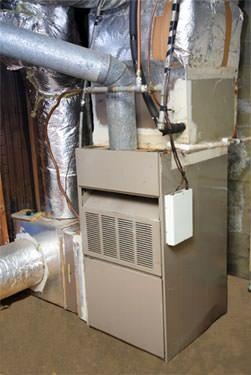Which Heating System Is Best For Your Home?
Know the Best Heating Systems to Heat Any Type of Home
You have probably heard a bunch of terms thrown around such as forced air heat, radiant heat, and electronic heat to name just a few. It can be difficult to know which heating method would be best for your unique home, so here are some tips to know which heating methods work best for what spaces.
Knowing the best way to heat your specific space will save you energy and money on home heating all winter long. The trick is to heat smart and not necessarily heat a lot. Think about the size and shape of your space and consider some of the options below.
Classic Forced-Air Heating
This is the preferred method used in homes across America. It works by drawing the room air in through ductwork to one of the following:
- Oil or Natural Gas Furnace
- Electric Heater
- Heat Pump
- Hydronic Coil Furnace
The air is filtered and heated by this method and then blown back into the rooms through other ductwork. In the room, you can use a fan, blower, or air handler to help better distribute the air throughout the home.
The main difference between forced air heating systems is the equipment used to heat the air. Homeowners can choose a system that works best for their budget and the systems their house already runs on. If your home already has ductwork then forced air heating is usually the smartest option. However, there are cheaper and more energy-efficient ways to heat a home explained below.
Comfortable, Even Heating with Radiant Floor Heating

Radiant floor heating is one of the most popular energy-efficient all-home heating methods around. It allows homeowners to evenly heat large spaces and entire homes with energy-efficient and evenly distributed heat through the floors allowing the heat to rise. Radiant floor heating can be done in multiple ways including:
- Natural gas heating
- Oil heating
- Electric heating
- Energy-efficient heating
- Geothermal heating
You can use whichever heating style you prefer or whatever your home is already set up to run. This makes radiant floor heating a viable option for almost every homeowner. Radiant floor heating is also considered one of the most energy-efficient ways to heat a home. According to the US Department of Energy radiant floor heating is more efficient than baseboard and forced-air heating because “no energy is lost through the air ducts” while heating the home. Plus, radiant floor heating does not stir up any dust or allergens around the home like forced air.
Heat Small Spaces with Electric Heating
Using electric heaters can be one of the most energy-saving methods of home heating as it allows you to restrict energy use to certain rooms at certain times. There are many energy-efficient single-room heaters on the market, and if you have small rooms they can heat up quickly.
However, even though you will be saving energy using electric heaters, you won’t necessarily save money on your energy bill. Electric heating is by far the most expensive form of heating. So, if your home's central heating system is run on anything other than electric, single-source electric heating may cost you more in the long run than radiant floor heating and forced-air heating.
Heat Your Home More Efficiently
When it comes down to it, you have to heat the home you have. Take into consideration other elements of heating your home like how your home is insulated, for example. Check if you have an insulated crawl space, attic, garage, or basement. Many times when you have below-grade spaces or an attic that is not insulated, you are losing more heat than you know. Plus, if you have walls that are not insulated and prone to losing heat, you may be overworking your home heating system as energy and heat escape to the outside.
A well-insulated home will allow any home heating system to work more efficiently and save you, the homeowner, a ton of money.
If your home is not properly insulated, consider getting a home insulation estimate from Cowleys. We service all of Monmouth, Ocean, Somerset, Middlesex, and Mercer Counties.
Article originally published by Dr. Energy Saver
